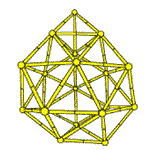Chemistry, Department of: Faculty Series

Barry Chin Li Cheung Publications
Document Type
Article
Date of this Version
4-27-2001
Abstract
Metallic single-walled carbon nanotubes have been proposed to be good one-dimensional conductors. However, the finite curvature of the graphene sheet that forms the nanotubes and the broken symmetry due to the local environment may modify their electronic properties. We used low-temperature atomically resolved scanning tunneling microscopy to investigate zigzag and armchair nanotubes, both thought to be metallic. “Metallic” zigzag nanotubes were found to have energy gaps with magnitudes that depend inversely on the square of the tube radius, whereas isolated armchair tubes do not have energy gaps. Additionally, armchair nanotubes packed in bundles have pseudogaps, which exhibit an inverse dependence on tube radius. These observed energy gaps suggest that most “metallic” single-walled nanotubes are not true metals, and they have implications for our understanding of the electronic properties and potential applications of carbon nanotubes.


Comments
Published in Science Vol. 292. no. 5517 (April 27, 2001), pp. 702–705; doi: 10.1126/science.1058853 Copyright © 2001 by the American Association for the Advancement of Science. Used by permission. http://www.sciencemag.org/cgi/content/full/292/5517/702